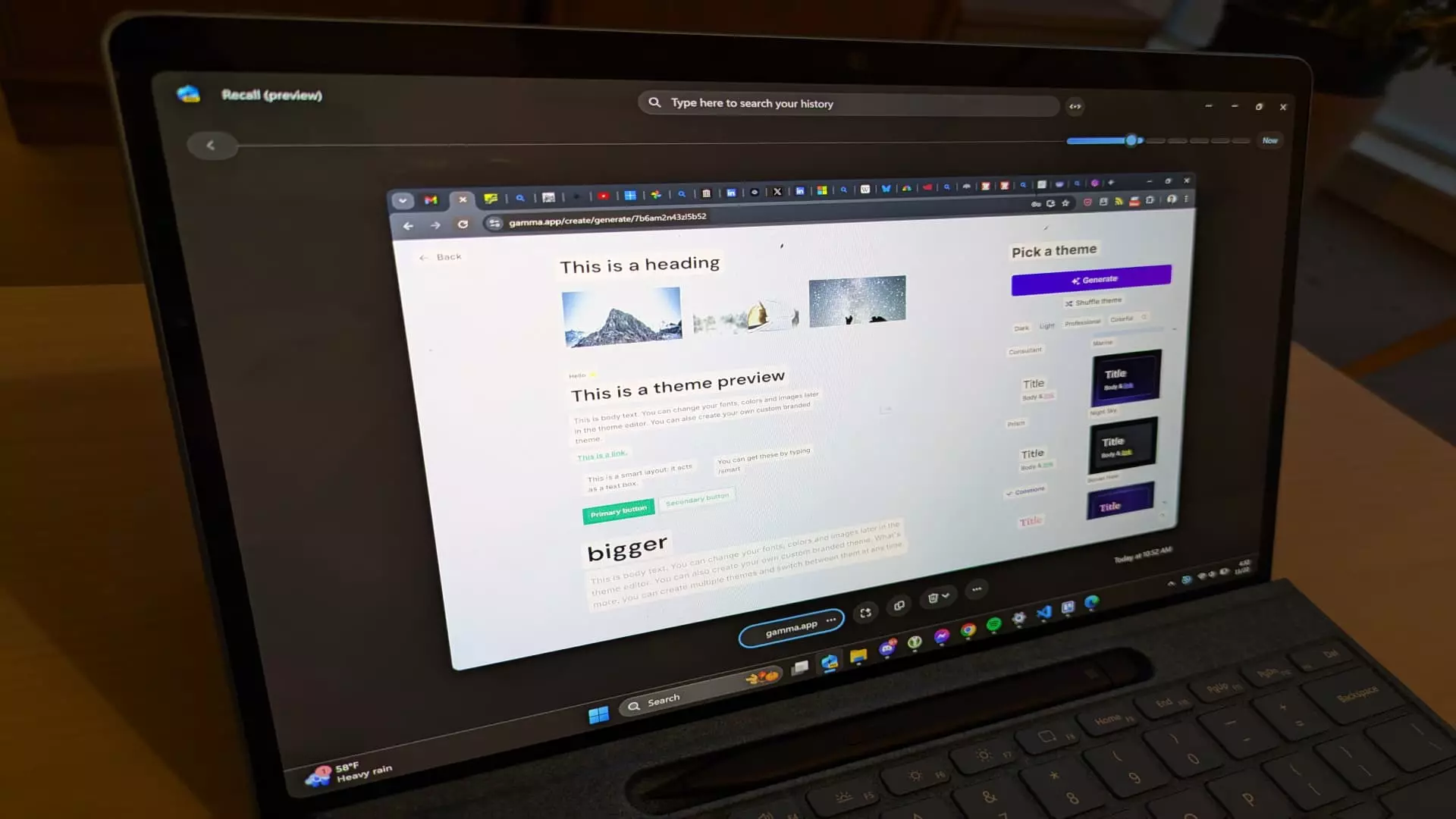The technological landscape is ever-evolving, with companies like Microsoft continuously pushing boundaries in the realm of personal computing. The recent introduction of Recall, a photographic memory search tool, has garnered attention both for its innovation and for the significant hurdles it faces. While promising, Recall’s performance during testing reveals the complexities involved in implementing artificial intelligence features, particularly ones that touch upon user privacy and functionality.
Announced back in May, Microsoft’s Recall was initially pitched as a flagship feature for its Copilot+ line of PCs. The technology leverages AI to capture screenshots and subsequently allows users to search for text or objects within these images using keywords. This functionality aims to simplify the process of locating information and enhancing productivity effectiveness on devices equipped with the latest Windows 11 operating system—ideal for professionals who often juggle multiple tasks and applications simultaneously.
However, the execution of such an advanced feature is not without its pitfalls. As software releases typically go, early adopters often encounter glitches and limitations. Recall is no exception, as initial evaluations indicate various performance issues and shortfalls in its capabilities. In having such a feature, one would reasonably anticipate seamless integration; however, the user experience has revealed gaps that highlight Recall’s status as a trial-and-error innovation rather than a polished tool.
One of the most notable aspects of Recall is the reaction it has spurred from cybersecurity experts. Concerns about data privacy and user surveillance were significant enough to prompt Microsoft to make substantial changes following its initial announcement. By encrypting Recall’s database and designating the feature to be off by default, Microsoft has taken a fortunate step towards alleviating some fears associated with photographic memory.
That said, the ethical implications of retaining detailed screenshots mirrored in AI capabilities remain topic of discussion. Balancing the desire for technological advancement while respecting user data privacy is a tightrope that many companies are learning to navigate. Microsoft’s decision to pivot illustrates the heightened sensitivity to privacy issues that has emerged in the tech industry, especially when introducing capabilities that touch on user behavior.
Despite the cautious approach Microsoft has employed, the testing phase of Recall has unveiled several operational challenges that could hinder user experience. One notable issue is the inconsistency in taking screenshots—users have reported noticeable gaps in image capture timing, leading to incomplete timelines that can undermine the core functionality of a photographic memory search tool. The expectation is clear; users want a continuous stream of information capture but instead encounter delays.
Moreover, while Recall offers an option to restrict screenshot capture from specific applications, this list is not exhaustive. Users may find that not all apps they want to safeguard are included, raising potential security risks. The search functionality too has exhibited disappointing performance, occasionally returning incomplete or inaccurate results, suggesting that Recall’s AI algorithms require further refinement.
Additionally, lagging response times when navigating through captured screenshots points to a need for optimization. A solution that is quick in search but slow in display is less likely to be embraced by users who prioritize efficiency and fluency in their workflow.
Despite the early issues highlighted during the testing period, there remains a thread of optimism regarding Recall’s potential. When functioning effectively, it can significantly enhance user experience by providing timely access to previously viewed content. The ability to return to the exact moment of digital interaction demonstrates a unique capability that could have implications for productivity if perfected.
Microsoft’s journey with Recall serves as a reminder of the challenges that accompany technological innovation—attempting to strike a balance between user needs, ethical considerations, and operational integrity. As testing continues and users provide feedback, it is imperative for Microsoft to pivot swiftly, addressing shortcomings to ensure Recall can one day fulfill its promise as a robust tool.
While Recall is a groundbreaking endeavor towards reimagining how users interact with information, its current limitations reflect the ongoing struggle of integrating cutting-edge technology into our daily lives. As Microsoft continues to refine this feature, the tech community will be watching closely, eager to see if Recall can evolve from a promising prototype into a reliable necessity for modern computing.

